目录
前言
在讲交换机之前我们需要了解一些概念,在RabbitMQ工作流程有一项叫**Exchange(交换机:消息的分发中心****),它的作用是将生产者发送的消息转发到具体的队列,队列再将消息以推送或者拉取方式给消费者进行消费。**
原:在RabbitMQ中生产者发送的信息不会直接投递到队列中,而是先将消息投递到交换机中,在由交换机路由到一个或多个队列中。
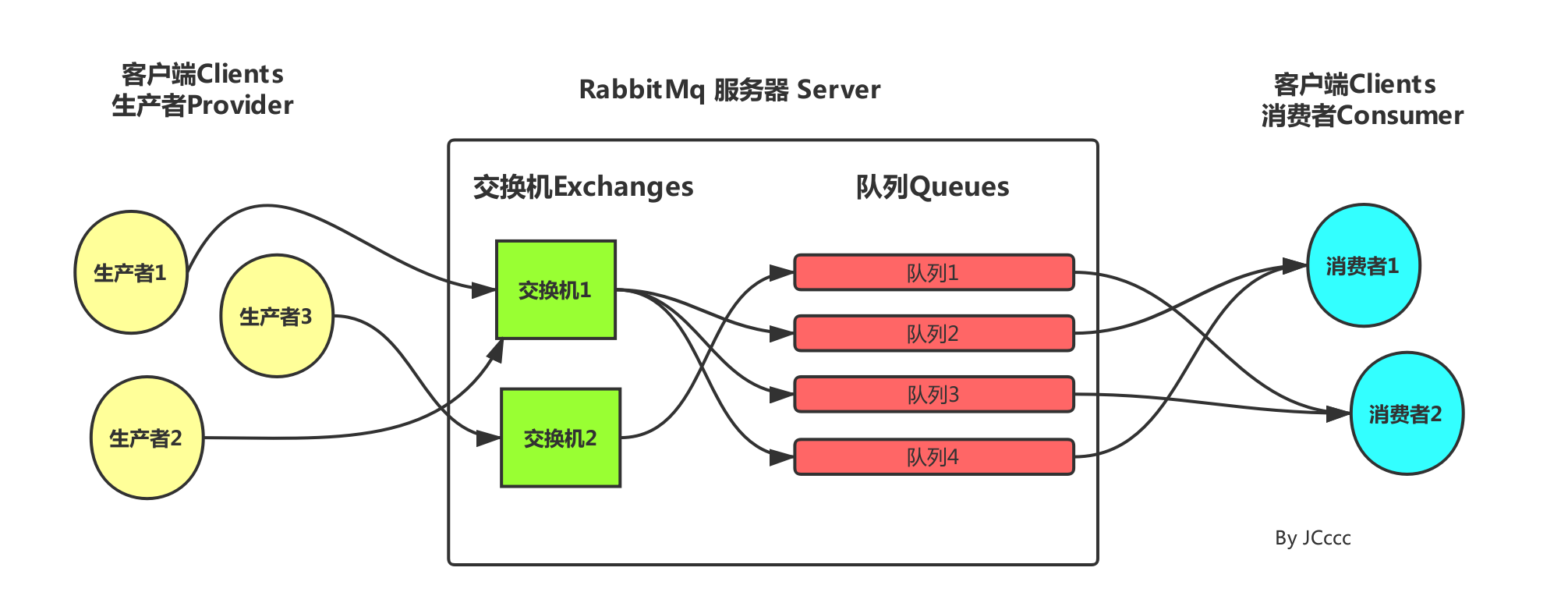
流程:生产者 --(路由键)---> 交换机 --(绑定键)---> 队列 --(pull,push)--->消费者
这里就需要了解这两个东西:
路由键(RoutingKey)****:每个消息都有一个称为路由键(routing key)的属性,它其实就是一个简单的字符串(或者可以说是一种规则的字符串)
绑定键(BindingKey)****:就是指定将队列跟接收路由键的交换机进行绑定
**生产者将信息发送给哪个Exchange是由RoutingKey决定的,而Exchange与哪个队列绑定是由BindingKey决定的。**
Exchange(交换机)的类型与应用
- 交换机的属性
除交换机类型外,在声明交换机时还可以附带许多其他的属性,其中最重要的几个分别是:
- Type:交换机名称
- Durability:是否持久化。如果持久性,则RabbitMQ重启后,交换机还存在
- Auto-delete:当所有与之绑定的消息队列都完成了对此交换机的使用后,是否删掉它
- Internal:当前Exchange是否用于RabbitMQ内部使用,默认fasle
- Arguments:扩展参数
这里就直接开始操作,配置在一篇就已做了讲解,非常简单!接下来的代码也之上在原基础上做了添加。
项目结构:
所需依赖:
<!--amqp协议--> <dependency> <groupId>org.springframework.boot</groupId> <artifactId>spring-boot-starter-amqp</artifactId> </dependency> <dependency> <groupId>org.springframework.boot</groupId> <artifactId>spring-boot-starter-web</artifactId> </dependency> <dependency> <groupId>org.projectlombok</groupId> <artifactId>lombok</artifactId> <optional>true</optional> </dependency>
1. 直连交换机:Direct Exchange
- 这是最简单的一种交换机类型。
- 当一个队列与交换机绑定时,需要指定一个路由键(RoutingKey),只有当消息的路由键与该队列绑定时指定的绑定键(BindingKey)完全匹配时,消息才会被路由到该队列。
如下图:
一、p发送消息时带了一个叫black的routing_key,交换机接受后会送到与black绑定的binding_key的队列中,也就是Q2。以此类推...
二、还有一种情况,当Q2也与交换机绑定了black,这时p发送的信息会同时推送到Q1和Q2两个队列中。

- 生产者
package com.ycxw.publisher.demos;
import org.springframework.amqp.core.Binding;
import org.springframework.amqp.core.BindingBuilder;
import org.springframework.amqp.core.DirectExchange;
import org.springframework.amqp.core.Queue;
import org.springframework.context.annotation.Bean;
import org.springframework.context.annotation.Configuration;
//定义队列
@Configuration
@SuppressWarnings("all")
public class RabbitConfig {
/**
* 定义队列 Q1
* @return
*/
@Bean
public Queue directQ1() {
return new Queue("direct-Q1");
}
/**
* 定义队列 Q2
* @return
*/
@Bean
public Queue directQ2() {
return new Queue("direct-Q2");
}
/**
* 自定义直连交换机
* @return
*/
@Bean
public DirectExchange directExchange() {
return new DirectExchange("direct-exchange", true, false);
}
/**
* 将队列 Q1与交换机进行绑定,并设置路由键
* @return
*/
@Bean
public Binding bindingQ1() {
return BindingBuilder.bind(directQ1())
.to(directExchange())
.with("direct_orange");
}
/**
* 将队列 Q2与交换机进行绑定,并设置路由键
* @return
*/
@Bean
public Binding bindingQ2() {
return BindingBuilder.bind(directQ2())
.to(directExchange())
.with("direct_black");
}
}
package com.ycxw.publisher.demos;
import com.fasterxml.jackson.core.JsonProcessingException;
import com.fasterxml.jackson.databind.ObjectMapper;
import org.springframework.amqp.core.AmqpTemplate;
import org.springframework.beans.factory.annotation.Autowired;
import org.springframework.web.bind.annotation.RequestMapping;
import org.springframework.web.bind.annotation.RestController;
/**
* 模拟发送请求
*/
@RestController
public class Sender {
@Autowired
private AmqpTemplate rabbitTemplate;
@RequestMapping("/send1")
public String sendFirst() {
/*向消息队列发送消息 converAndSend(交换机,路由键,发送的信息)*/
rabbitTemplate.convertAndSend("direct-exchange", "direct_orange", "我是Q1");
return "🫶";
}
@RequestMapping("/send2")
public String sendSecond() throws JsonProcessingException {
rabbitTemplate.convertAndSend("direct-exchange", "direct_black", "我是Q2");
return "🫶";
}
}
- 消费者接受信息
package com.ycxw.consumer.demos;
import org.springframework.amqp.rabbit.annotation.RabbitHandler;
import org.springframework.amqp.rabbit.annotation.RabbitListener;
import org.springframework.stereotype.Component;
@Component
@RabbitListener(queues = {"direct-Q1"})
public class DirectReceiver {
@RabbitHandler
public void handler(String msg) {
System.out.println(msg);
}
}
package com.ycxw.consumer.demos;
import org.springframework.amqp.rabbit.annotation.RabbitHandler;
import org.springframework.amqp.rabbit.annotation.RabbitListener;
import org.springframework.stereotype.Component;
@Component
@RabbitListener(queues = {"direct-Q2"})
public class DirectReceiver2 {
@RabbitHandler
public void handler(String msg) {
System.out.println(msg);
}
}
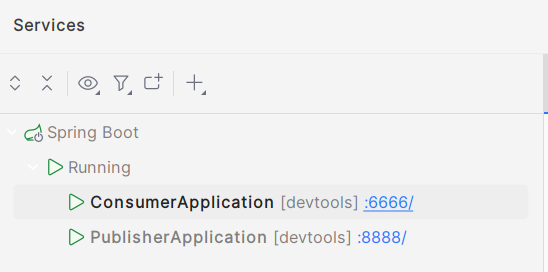
- 测试
Q1队列:


Q2队列:
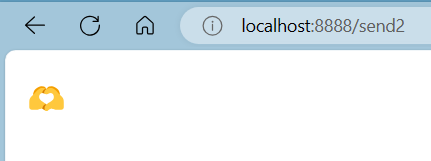

直连交换机适用场景:
有优先级的任务,根据任务的优先级把消息发送到对应的队列,这样可以指派更多的资源去处理高优先级的队列。
2. 主题交换机:Topic Exchange
直连交换机的缺点!
直连交换机的routing_key方案非常简单,如果我们希望一条消息发送给多个队列,那么这个交换机需要绑定上非常多的routing_key。假设每个交换机上都绑定一堆的routing_key连接到各个队列上,那么消息的管理就会异常地困难。所以RabbitMQ提供了一种主题交换机,发送到主题交换机上的消息需要携带指定规则的routing_key。
主题交换机的routing_key需要有一定的规则,交换机和队列的binding_key需要采用*.#.*.....的格式,每个部分用 **. **分开,其中
- 表示一个单词
表示任意数量(零个或多个)单词。
主题交换机会根据这个规则将数据发送到对应的(多个)队列上。

示例:
- 队列Q1绑定键为 .orange.
- 队列Q2绑定键为 ..black 与 pink.#
- 如果一条消息携带的路由键为 a.orange.b,那么队列Q1将会收到
- 如果一条消息携带的路由键为 a.b.black 或 pink.a(pink.a.b、pink.abc.sb.as....),那么队列Q2将会收到
- 如果想让Q1和Q2都接收到P发出的信息,那么路由键为 xx.orange.black 或 pink.orange.xx
- 生产者
/**
* 定义路由键规则
*/
public static String A_KEY ="*.orange.*";
public static String B_KEY ="*.*.black";
public static String C_KEY ="pink.#";
/**
* 定义队列 Q1
* @return
*/
@Bean
public Queue topicQ1() {
return new Queue("topic-Q1");
}
/**
* 定义队列 Q2
* @return
*/
@Bean
public Queue topicQ2() {
return new Queue("topic-Q2");
}
/**
* 自定义主题交换机
* @return
*/
@Bean
public TopicExchange topicExchange() {
return new TopicExchange("topic-exchange", true, false);
}
@Bean
public Binding topic_q1(){
return BindingBuilder.bind(topicQ1())
.to(topicExchange())
.with(A_KEY);
}
@Bean
public Binding topic_q2(){
return BindingBuilder.bind(topicQ2())
.to(topicExchange())
.with(B_KEY);
}
@Bean
public Binding topicq2(){
return BindingBuilder.bind(topicQ2())
.to(topicExchange())
.with(C_KEY);
}
/**
* 同时绑定Q1、Q2
*/
@Bean
public Binding topicq1(){
return BindingBuilder.bind(topicQ1())
.to(topicExchange())
.with(C_KEY);
}
模拟发送请求:通过路劲传参(指定路由)
@RequestMapping("/send3") public String sendThree(@RequestParam String rex) throws JsonProcessingException { rabbitTemplate.convertAndSend("topic-exchange", rex, "hello"); return "🫶"; }
- 消费者接受信息
package com.ycxw.consumer.demos;
import org.springframework.amqp.rabbit.annotation.RabbitHandler;
import org.springframework.amqp.rabbit.annotation.RabbitListener;
import org.springframework.stereotype.Component;
import java.util.Map;
@Component
public class TopicReceiver {
@RabbitListener(queues = {"topic-Q1"})
@RabbitHandler
public void handler(String msg){
System.out.println("已接受到队列topic-Q1传递过来的消息:"+msg);
}
@RabbitListener(queues = {"topic-Q2"})
@RabbitHandler
public void handlerB(String msg) {
System.out.println("已接受到队列topic-Q2传递过来的消息:" + msg);
}
}
- 测试
Q1队列:


Q2队列:
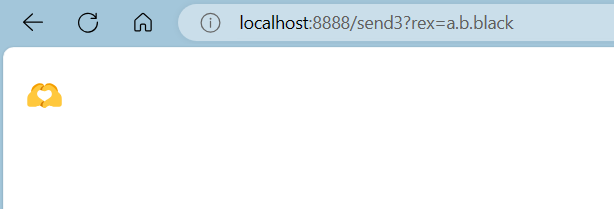

同时调用两个队列:
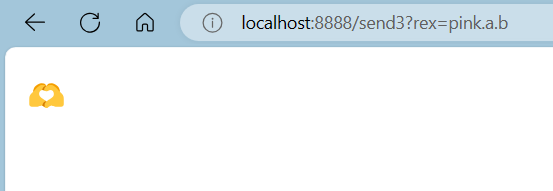

3. 扇形交换机:Fanout Exchange
扇形交换机是最基本的交换机类型,它所能做的事情非常简单———广播消息。
扇形交换机会把能接收到的消息全部发送给绑定在自己身上的队列。因为广播不需要“思考”,所以扇形交换机处理消息的速度也是所有的交换机类型里面最快的。
这个交换机没有路由键概念,就算你绑了路由键也是无视的。
注意!!!:扇形交换机没有路由键,所以发送请求会被所有绑定的交换机队列接收
- 生产者
/**
* 定义队列 Q1
* @return
*/
@Bean
public Queue fanoutQ1() {
return new Queue("fanout-Q1");
}
/**
* 定义队列 Q2
* @return
*/
@Bean
public Queue fanoutQ2() {
return new Queue("fanout-Q2");
}
/**
* 定义扇形交换机
* @return
*/
@Bean
public FanoutExchange fanoutExchange(){
return new FanoutExchange("fanout-exchange",true,false);
}
/**
* 绑定队列 (没有路由键)
* @return
*/
@Bean
public Binding fanout_q1(){
return BindingBuilder.bind(fanoutQ1())
.to(fanoutExchange());
}
@Bean
public Binding fanout_q2(){
return BindingBuilder.bind(fanoutQ2())
.to(fanoutExchange());
}
- 模拟发送信息
@RequestMapping("/send4")
public String sendFour() throws JsonProcessingException {
//必须填写路由键这项,否则接收不到信息。
//由于扇形交换机没有路由键,所以这向需要填空,不然会将发送的信息(hello)解析为路由键
rabbitTemplate.convertAndSend("fanout-exchange","","hello");
return "🫶";
}
- 消费者
package com.ycxw.consumer.demos;
import org.springframework.amqp.rabbit.annotation.RabbitHandler;
import org.springframework.amqp.rabbit.annotation.RabbitListener;
import org.springframework.stereotype.Component;
@Component
public class FanoutReceiver {
@RabbitListener(queues = {"fanout-Q1"})
@RabbitHandler
public void handler(String msg) {
System.out.println("已接受到队列fanout-Q1传递过来的消息:" + msg);
}
@RabbitListener(queues = {"fanout-Q2"})
@RabbitHandler
public void handlerB(String msg) {
System.out.println("已接受到队列fanout-Q2传递过来的消息:" + msg);
}
}
- 测试
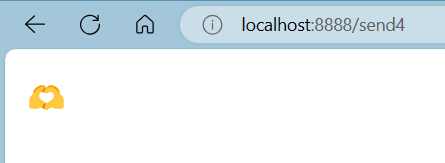

4. 默认交换机(直连)
实际上是一个由RabbitMQ预先声明好的名字为空字符串的**直连交换机(direct exchange)**。它有一个特殊的属性使得它对于简单应用特别有用处:那就是每个新建队列(queue)都会自动绑定到默认交换机上,绑定的路由键(routing key)名称与队列名称相同。

如:当你声明了一个名为”hello”的队列,RabbitMQ会自动将其绑定到默认交换机上,绑定(binding_key)的路由键名称也是为”hello”。
因此,当携带着名为”hello”的路由键的消息被发送到默认交换机的时候,此消息会被默认交换机路由至名为”hello”的队列中类似amq.*的名称的交换机:
这些是RabbitMQ默认创建的交换机。这些队列名称被预留做RabbitMQ内部使用,不能被应用使用,否则抛出403 (ACCESS_REFUSED)错误
版权归原作者 云村小威 所有, 如有侵权,请联系我们删除。
